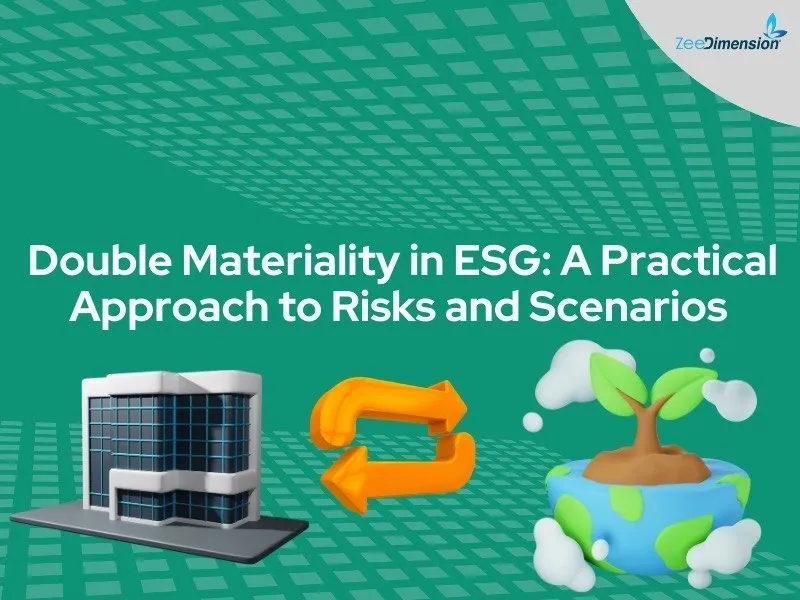
Understanding and implementing double materiality in the evolving sustainability landscape is crucial for businesses aiming for holistic ESG (Environmental, Social, and Governance) reporting. This blog will explore why double materiality matters, providing practical scenarios to illustrate its importance. By understanding ESG risks and opportunities, aligning with stakeholder expectations, and balancing financial performance with environmental and social responsibilities, companies can achieve a comprehensive and effective ESG strategy.
What is Double Materiality?
Double materiality is a methodology for determining both financial and effect materiality. Financial materiality refers to how environmental, social, and governance (ESG) issues affect a company’s financial performance. On the other side, impact materiality examines how a company’s operations effect the environment and society. This dual method provides a thorough picture of a company’s entire effect and performance.
Why Double Materiality Matters
• Understand ESG risks and opportunities.
• Align with stakeholder expectations.
• Balance financial performance with environmental and social responsibilities.
Scenario 1 | A Steel Manufacturer and Climate Risks
Financial Materiality:
• 10 days of production loss due to flooding: $5M annual revenue loss.
• Repair costs: $1.5M per year.
Impact Materiality:
• 2M metric tons of CO₂ emissions annually.
• Carbon pricing at $50/ton by 2030 = $100M/year.
Key Insight: Acting on emissions now saves significant future costs.
Scenario 2 | A Global Retailer and Labor Practices
Financial Materiality:
• 5% revenue loss from consumer backlash = $100M.
• Rebranding costs: $20M.
Impact Materiality:
• 10,000 workers, 30% underpaid.
• Wage increase of 20% = $2M annually.
Key Insight: Improving worker conditions is a small investment compared to reputational benefits.
Scenario 3 | A Tech Company and Data Privacy
Financial Materiality:
• $10M fine from a recent data breach.
• Lost revenue from 250,000 users = $25M.
• Upgrading cybersecurity: $5M upfront + $1M/year.
Impact Materiality:
• Loss of trust from 1M users.
• Long-term reputational damage.
Key Insight:
Proactively securing data safeguards both financial and social trust.
Key Takeaways
1. Holistic Risk Assessment: Assess the risks and factors that contribute to global issues.
2. Cost-Benefit Analysis: Proactively addressing effects reduces long-term expenses.
3. Strategic Advantage: Resilience and value are produced by ESG leadership.
Conclusion
Are you ready to integrate double materiality into your ESG strategy?
Let’s start the conversation. Share your thoughts below or connect to explore more!







